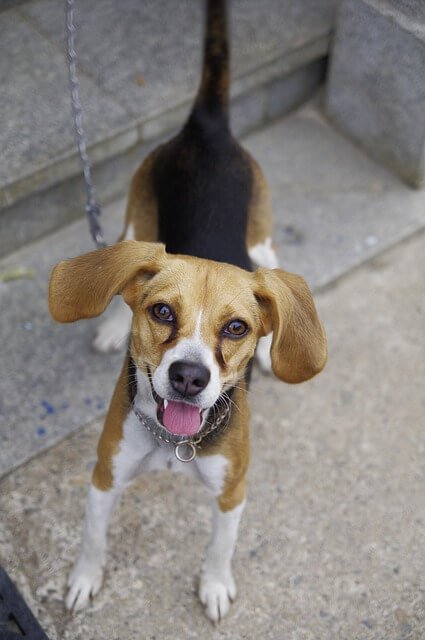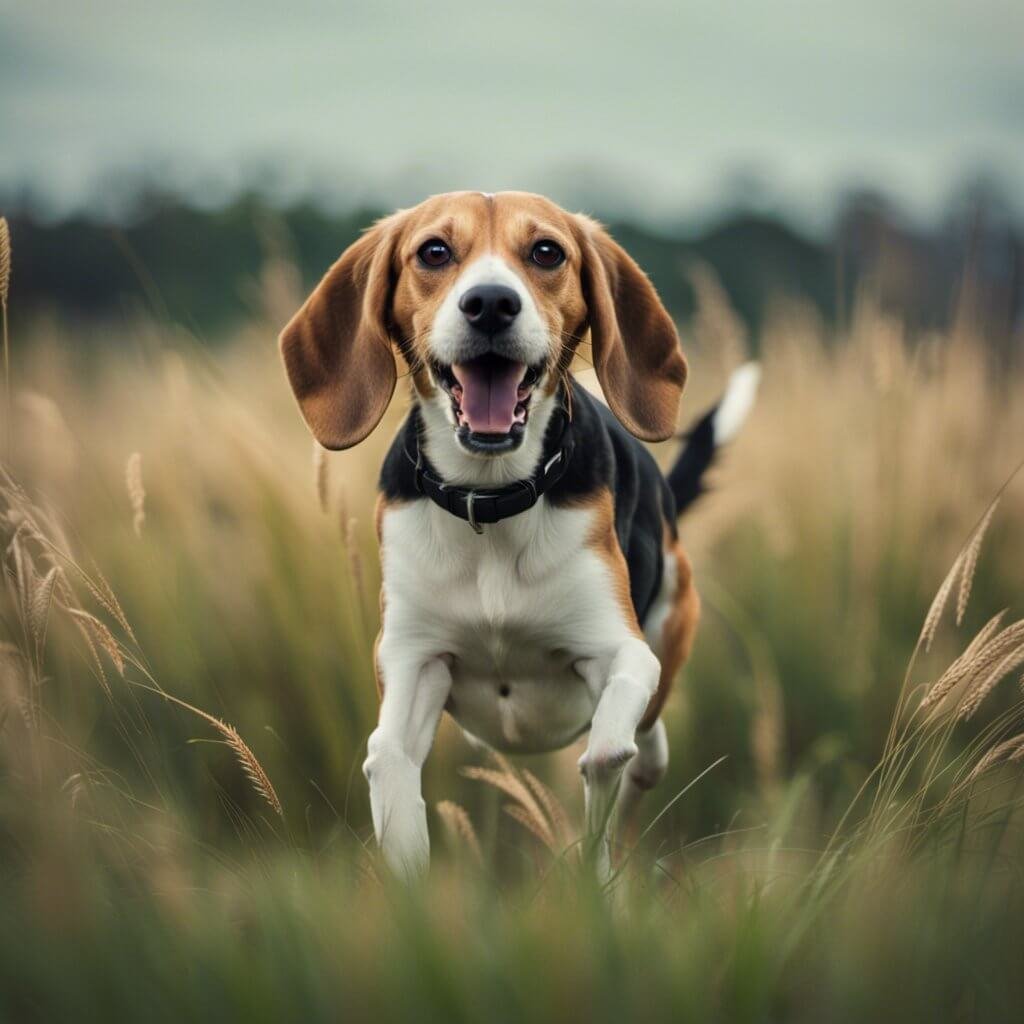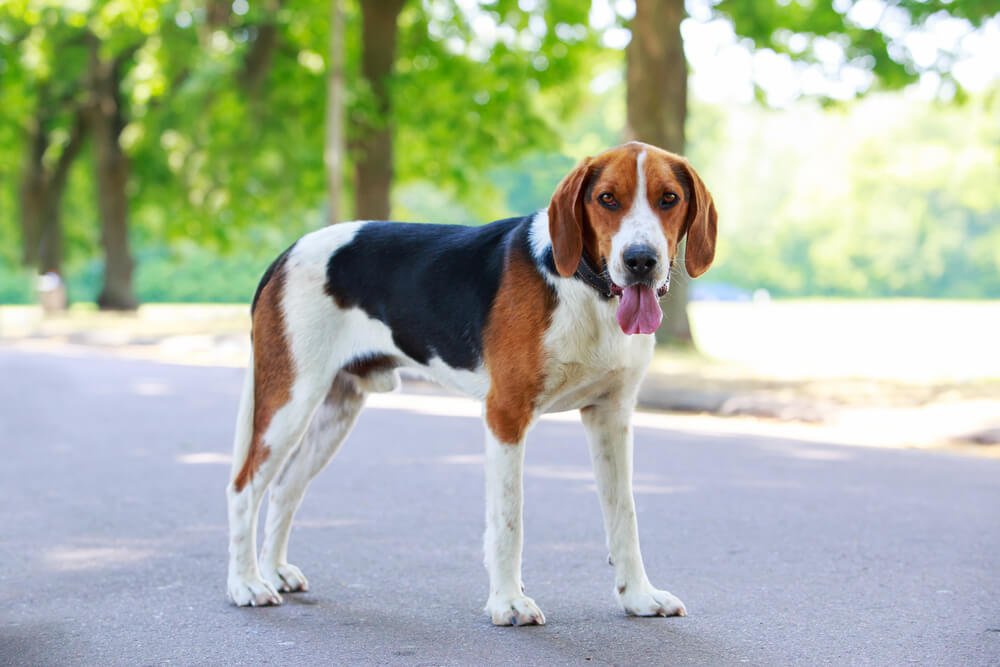The Harrier Beagle, often referred to simply as the Harrier, is a spirited and energetic breed that captivates dog lovers with its affectionate nature and keen hunting abilities. As a larger type of Beagle, the Harrier stands out for its striking appearance and charming personality. In this article, I will delve into the history, characteristics, and care requirements of the Harrier Beagle, giving you a comprehensive understanding of this lively and lovable hound.
Harrier Beagle
History and Origins
The Harrier Beagle has a rich history that traces back to medieval England, where it was developed as a hunting dog for tracking hares and rabbits. Its name “Harrier” comes from the word “hare,” reflecting its primary purpose in hunting. While its precise origins remain somewhat mysterious, it is believed that the Harrier Beagle descended from a mix of various hound breeds, including the English Foxhound and the Basset Hound.
The breed’s popularity soared during the 13th century when it became a favorite among nobility for its exceptional hunting skills and amiable personality. Throughout the centuries, Harriers were diligently bred for their tracking and scenting abilities, eventually evolving into the distinct breed we recognize today.
Physical Characteristics
The Harrier Beagle stands out with its athletic and well-proportioned build. They typically measure between 19 to 21 inches at the shoulder and weigh around 45 to 65 pounds, making them larger than their smaller Beagle relatives. This medium-sized hound boasts a sleek, short coat that comes in a variety of colors, with the most common being tricolor (white, black, and tan) and red and white.
One of the defining features of the Harrier Beagle is its expressive eyes, which are usually large, dark, and filled with intelligence and warmth. Their long, pendant-shaped ears contribute to their excellent sense of smell, allowing them to pick up even the faintest scent while on the hunt.
Personality and Temperament

Harriers are known for their amiable nature, making them delightful companions for families and individuals alike. They are affectionate and thrive on human companionship, forming strong bonds with their owners. This breed’s sociable and outgoing demeanor makes it great with children and other pets, as they enjoy the company and playtime with others.
Due to their hunting heritage, Harrier Beagles possess a strong sense of curiosity and an inherent drive to follow scents. It is essential to provide them with ample mental and physical stimulation to keep them happy and prevent boredom. Regular exercise, interactive play, and scent-based activities can help satisfy their instincts and prevent potential behavioral issues.
Care and Training
To ensure the well-being of a Harrier Beagle, regular exercise is vital. These active hounds require daily walks, playtime, and off-leash activities in a secure area to burn off excess energy. Failure to provide adequate exercise can lead to restlessness and potentially destructive behavior.
Harriers are intelligent and eager to please, making them receptive to training with positive reinforcement techniques. Early socialization is essential to ensure they grow into well-mannered and well-adjusted dogs. With consistent training and patience, Harrier Beagles can excel in obedience and basic commands.
Additionally, routine grooming is necessary to keep their short coat in good condition. Regular brushing will help minimize shedding and keep their coat looking neat and clean.

FAQ
Are Harrier Beagles rare?
Irrespective of its historical origins, whether confirmed or speculative, one thing remains certain – the Beagle Harrier is a relatively uncommon breed that has not gained widespread popularity or affection beyond France. Even within France, it is considered a rare breed, with such limited numbers that it faces the risk of potential extinction.
Is A Beagle A Harrier?
When comparing harriers and beagles, several notable distinctions set these two hound breeds apart. Firstly, harriers generally exhibit a larger size compared to beagles. Additionally, harriers are relatively uncommon, whereas beagles are more prevalent. So, if you come across a dog with soft, droopy ears and a coat featuring brown, black, and white colors, it’s highly probable that you’re looking at a beagle rather than a harrier.
Is a Beagle Harrier a cross breed?
Yes, the Beagle Harrier is considered a crossbreed. It is believed to be a result of intentional crossbreeding between the Beagle and the Harrier dog breeds. As such, the Beagle Harrier shares traits and characteristics from both parent breeds. While there may be variations in individual dogs, the overall goal in breeding the Beagle Harrier was likely to create a hound that possessed the best qualities of both the Beagle and the Harrier.
Are Harriers aggressive?
Being a typical pack hound, the Harrier is naturally inclined to function as part of a group, making it outgoing and friendly in nature. This breed exhibits a gentle temperament and is not inclined towards aggressiveness when interacting with other dogs.
Conclusion
The Harrier Beagle is a delightful and affectionate breed that combines the playful nature of the Beagle with the athleticism of a hound. Their hunting instincts, coupled with their friendly disposition, make them wonderful family pets for active households. When given the love, attention, and exercise they need, Harrier Beagles can become loyal and devoted companions, enriching the lives of their owners with boundless joy and enthusiasm.

